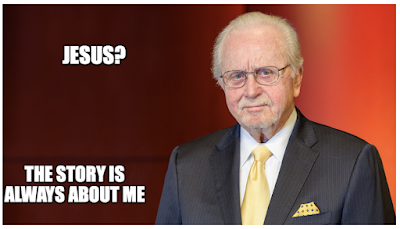Leave it to the Edmond Oklahoma cult to make the Armstrong version of Passover into a story about their church, Mystery of the Ages, and the intense persecution it faces daily. I honestly do not think Flurry has an original thought in his alcobol-riddled mind.
Baptized members of the Philadelphia Church of God observed the Passover, a memorial of the beating and death of Jesus Christ, on the night of April 14. Let’s consider the persecution that God’s one true Church has endured to preserve the Passover.
After the PCG beats and kills Christ at their annual ceremony he is left to be swept up with the crumbs and tossed outside for another year.
Flurry leaves his Christ in the dust and proceeds to tell the story of his imagined cult history and warns everyone that there are not many true Christians out there and thus it is easy to prove they are true Christians
Just a few decades after Christ’s death, a dark curtain fell on the history of God’s Church. Concerning this time period, Herbert W. Armstrong wrote in Mystery of the Ages, "Already the curtain was rung down on the history of the true Church. You read of it in the book of Acts, but it doesn’t go much beyond that. But the curtain seems to lift, and we begin to get a little bit of the history in about A.D. 150. There we see a church calling itself Christian, but it’s a totally different church, as different as night is from day, down from up, or black from white. But it called itself Christian."
Notice what Edward Gibbon recorded in The Decline and Fall of the Roman Empire: "The scanty and suspicious materials on ecclesiastical history seldom enable us to dispel the dark cloud that hangs over the first age of the Church." Mr. Armstrong often referred to this time period as "the lost century" because in secular history, as he wrote, "the history of that Church was lost."
The book of Acts ends abruptly, several years before Paul’s death. John wrote his epistles and the book of Revelation around A.D. 85 to 90.
Continuing from Mystery of the Ages: "Scholars and church historians recognize that events in the early Christian Church between A.D. 50 and 150 can only be seen in vague outline—as if obscured by a thick mist." (This is the same "lost century" he referred to in The Incredible Human Potential as occurring from A.D. 70 to 170.) Some Bible authors who wrote after A.D. 50, such as Peter, Jude and John, provided some details of the A.D. 50 to 90 period of Church history. But the primary purpose of their writings was not to chronicle events of the day, so the history of that period remains obscure. And the obscurity grows far thicker after A.D. 90.
Mr. Armstrong quoted from a book titled A Handbook of Church History, by Samuel G. Green: "The 30 years which followed the close of the New Testament canon and the destruction of Jerusalem are in truth the most obscure in the history of the Church. When we emerge in the second century we are, to a great extent, in a changed world"(emphasis mine throughout).
We do have some insight into this obscure time from secular sources. However, an element of caution must be used when studying secular history regarding the first- and early second-century Church. It is extremely difficult to tell who was a true Christian and who was false. As historian Edward Burton wrote, "The fugitives from Jerusalem … while some became true disciples of Jesus, others, as in the case in spreading of new opinions, may have imperfectly learnt, or ignorantly perverted, the real doctrines of Christianity" (Lectures Upon the Ecclesiastical History of the First Three Centuries). From secular history, the one measure we can safely use to determine which people were part of God’s true Church and which were not is the doctrines they taught.




